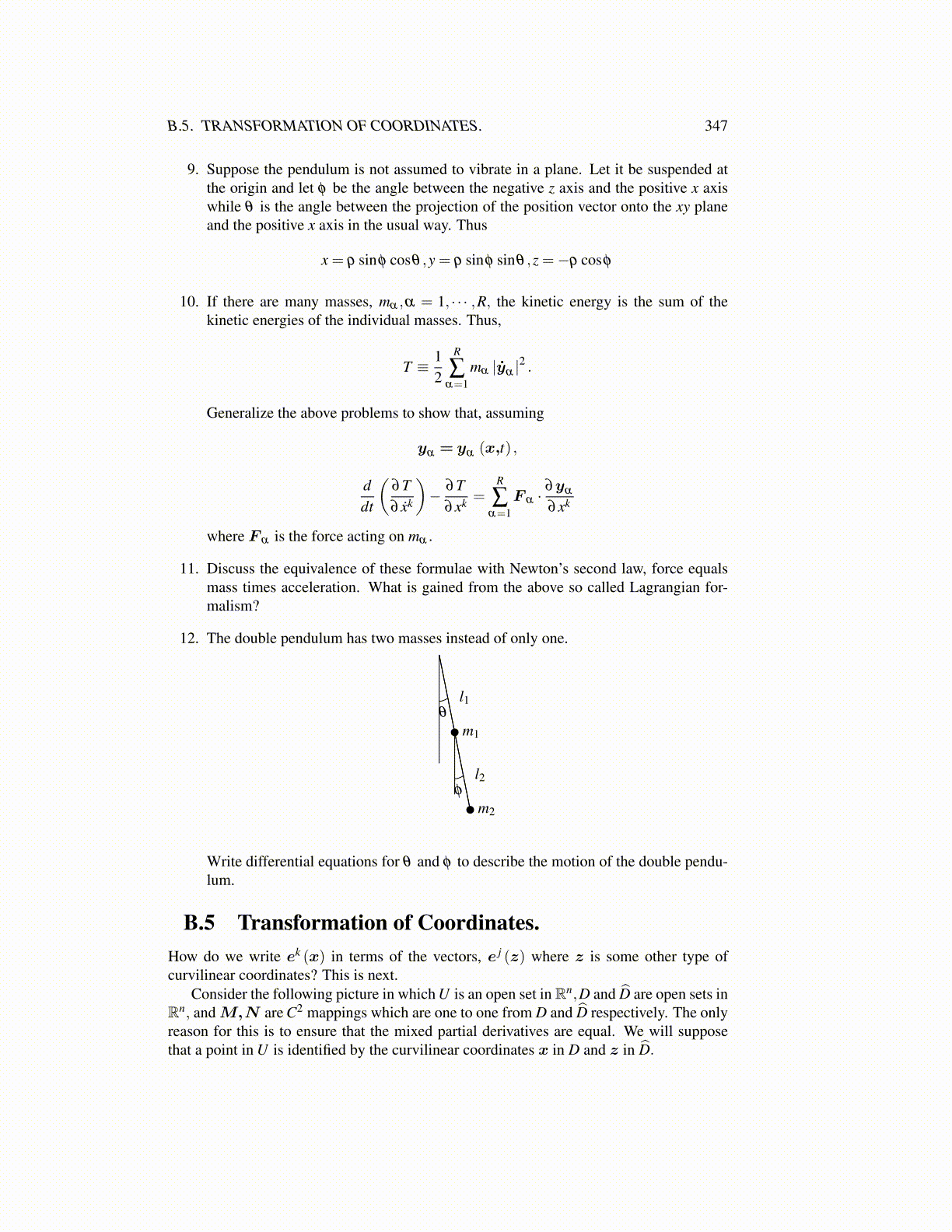
B.5. TRANSFORMATION OF COORDINATES. 347
9. Suppose the pendulum is not assumed to vibrate in a plane. Let it be suspended atthe origin and let φ be the angle between the negative z axis and the positive x axiswhile θ is the angle between the projection of the position vector onto the xy planeand the positive x axis in the usual way. Thus
x = ρ sinφ cosθ ,y = ρ sinφ sinθ ,z =−ρ cosφ
10. If there are many masses, mα ,α = 1, · · · ,R, the kinetic energy is the sum of thekinetic energies of the individual masses. Thus,
T ≡ 12
R
∑α=1
mα |ẏα |2 .
Generalize the above problems to show that, assuming
yα = yα (x,t) ,
ddt
(∂T∂ ẋk
)− ∂T
∂xk =R
∑α=1
F α ·∂yα
∂xk
where F α is the force acting on mα .
11. Discuss the equivalence of these formulae with Newton’s second law, force equalsmass times acceleration. What is gained from the above so called Lagrangian for-malism?
12. The double pendulum has two masses instead of only one.
m1
l1θ
m2
l2φ
Write differential equations for θ and φ to describe the motion of the double pendu-lum.
B.5 Transformation of Coordinates.How do we write ek (x) in terms of the vectors, e j (z) where z is some other type ofcurvilinear coordinates? This is next.
Consider the following picture in which U is an open set inRn,D and D̂ are open sets inRn, and M,N are C2 mappings which are one to one from D and D̂ respectively. The onlyreason for this is to ensure that the mixed partial derivatives are equal. We will supposethat a point in U is identified by the curvilinear coordinates x in D and z in D̂.